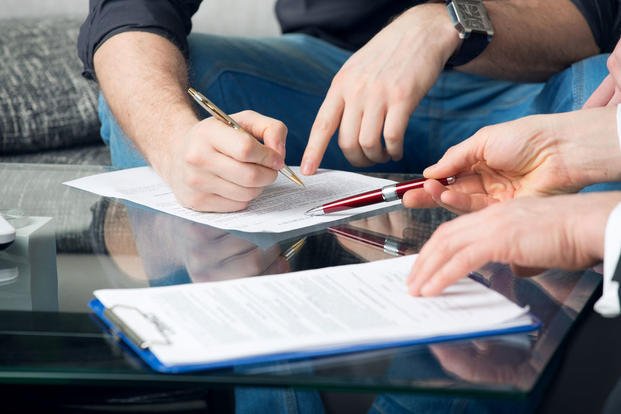It starts out relatively quietly. You decide to get a VA loan to buy a home or you decide it's time to refinance. Either way, your next step is applying for the mortgage. You find a lender, speak with a loan officer and ultimately choose your VA lender and the wheels begin to turn. And turn. And turn. You provide tax returns, bank statements, pay check stubs and sign a seemingly endless stack of VA and lender-required paperwork. You know it will end soon, but do you know how it will end?
The Process
Once you apply for a loan, you automatically trigger a full range of federal and state regulations. Lenders are required to provide you with a written estimate of closing costs, your annual percentage rate and your fair share of loan disclosures.
Once you've picked out a property, the wheels turn faster still. An inspection is ordered along with a property appraisal. A closing date and location are selected and you begin to document your loan file.
As you provide your documentation and the lender has ordered services from third parties such as title insurance and closing services, your loan is slowly put into a position of being submitted to an underwriter who will ultimately decide whether or not your loan meets VA guidelines. Even though your loan officer asks for more information and you provide it, the loan doesn't get evaluated until the file is complete. Once completed, it then goes for an approval.
After the Approval
When your loan is approved, the lender is saying that your loan application and the documentation included meets the required VA lending guidelines. Sometimes, in fact usually, the lender has additional questions that need to be answered before your loan papers can be ordered and sent to the closing table. These additional questions are called "loan conditions" and simply mean that the lender will approve your loan "on the condition" that you clear up any confusion in your loan file.
For example, you had a garage sale two weeks ago and deposited $800 in cash. That $800 shows up on your bank statement and the lender wants to know where it came from. At first glance that seems a bit silly to document more money but lenders do ask that all undocumented deposits be, well, documented.
Perhaps your pay check stub included in your application is more than 30 days old. The lender will ask for a new stub because the guidelines do require that VA loans have pay check stubs in the file within the most recent 30 day period. Once your conditions are met, your loan papers are drawn up and electronically submitted to your closing agent.
But before you go, there's something you first want to see.
How Much Money Do You Need to Bring?
24 hours before you're expected to sign your closing papers, your lender will forward to you a copy of your estimated settlement statement. This document itemizes all charges, credits and payments to all parties associated with the sale. This includes not just the seller and you, but third party providers such as attorneys and inspectors.
On the bottom left hand side of the settlement statement you'll see the exact amount you're required to bring to the closing table. If there are any discrepancies or mistakes, contact your loan officer and get them fixed. A common error might be an appraisal fee you paid ahead of time but you're still being charged for it. Once you're satisfied the numbers are correct, you move forward.
At the Closing Table
It's the big day. The day you take ownership of your new home. So what happens? You'll probably be asked if you'd like some coffee or a soft drink then you're taken to a room where the closing agent sits. This agent can be an attorney or escrow officer or any duly licensed closing agent authorized to handle the transfer of real estate.
You will sign more documents, some of them originals of copies you've signed before. Your closing agent follows "lender's instructions" line by line, making sure that you sign where you're supposed to sign and collect the proper amount of money from you. You can bring a cashier's check with you or arrange to have your funds wired to the closing agent ahead of time.
Once you've signed everything, you'll provide two pieces of ID, with at least one of them with a photo. The closing agent will copy your ID, verify your identity, scan your signed documents then electronically return them to the lender for review.
Once the lender has determined that the closing agent followed the instructions correctly, the lender releases the funds needed to the closing agent and you get your keys. All of this took about an hour.
The closing is a cathartic moment. It's been a bit hectic at times and you might feel that the VA lender had a never ending avalanche of paperwork but you made it. You exhale, smile and celebrate. Congratulations!
Get Started Today
Our VA loan finder can match you with up to five rate quotes from different lenders. Check it out now!










